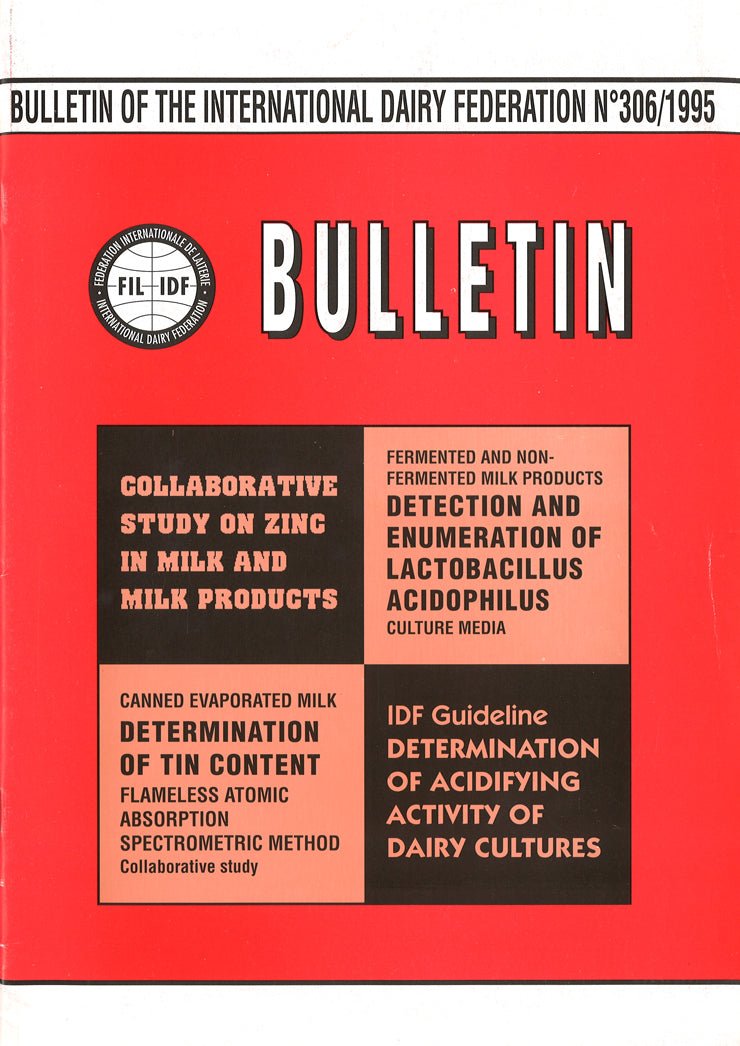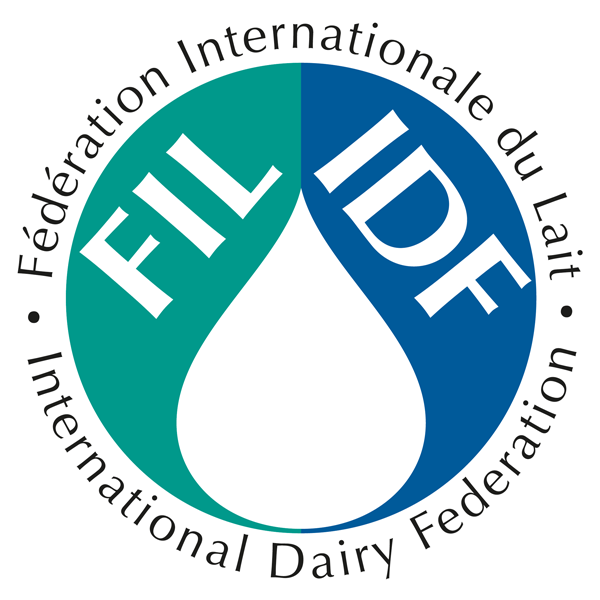Bulletin of the IDF N° 306/1995 - Collaborative Study on Zinc in Milk and Milk Products
Couldn't load pickup availability
Document info
| pages | 36 |
|---|---|
| published date | 24 March 1995 |
| reference | Bulletin of the IDF No. 306/1995 |
Publication description
Collaborative Study on Zinc in Milk and Milk Products
by M. Carl (Germany)
An international standard method for the determination of zinc in milk and milk products was elaborated by IDF/ISO/AOAC Group E15 “Heavy metals and other elements in milk and milk products” and validated in an international collaborative study based on the requirements of the IDF Standard 135B:1991. In the meantime the method was accepted as Provisional IDF Standard 156:1992. The results are described and discussed in this report.
18 pp
Canned Evaporated Milk: Determination of Tin Content
Flameless Atomic Absorption Spectrometric Method – Collaborative study Organization by G. Ellen (Netherlands) under the auspice of the joint IDF/ISO/AOAC Group of Experts E15 – Heavy metals and other elements
A flameless atomic absorption spectrometric method for the determination of the tin content in canned evaporated milk was studied collaboratively.
For this purpose 5 samples of evaporated milk, spiked with a standard solution of tin to achieve levels from 8 to 144 mg tin/kg, were analysed as blind duplicates by 5 laboratories. After statistical evaluation of the results, values for the repeatability and reproducibility of the method have been calculated.
Values of 7% relative and 19% relative are proposed for the repeatability and reproducibility, respectively. The results of the study are described and discussed in this report.
3 pp
Fermented and Non-Fermented Milk Products: Detection and Enumeration of Lactobacillus acidophilus
Culture Media by Group (former E44) E104 – Lactic acid bacteria and starters
Some studies have shown that Lactobacillus acidophilus included in the diet will colonize the intestinal tract of man and produce antagonistic actions towards undesirable bacteria that can produce various forms of gastroenteritis. Since L. acidophilus may be combined with several different lactic acid bacteria and bifidobacteria, a variety of fermented and non-fermented milk products have been developed and are on the market today. This has resulted in a need to specify media in order to detect and enumerate L. acidophilus.
11 pp
IDF Guideline – Determination of Acidifying Activity of Dairy Cultures
by Group E104 - Lactic acid bacteria and starters
IDF Questionnaire 792/E – Preparation of a standard for determination of acidification activity in dairy cultures – prepared by IDF Group E104 (Lactic acid bacteria and starters) was circulated to all IDF National Committees for replies. The questions were:
(1) Which method and medium do you use to test the acidification activity in mesophilic cultures ?
(2) Which method and medium do you use to test the acidification activity in thermophilic cultures ?
(3) Other comments.
An abstract scheme of the 18 widely differing replies is presented.
As the Group was unable to produce a uniform standard covering all methodologies given by the NCs, the general guideline presented here was prepared.
3 pp


